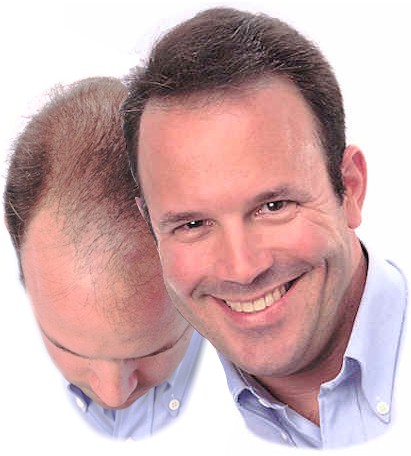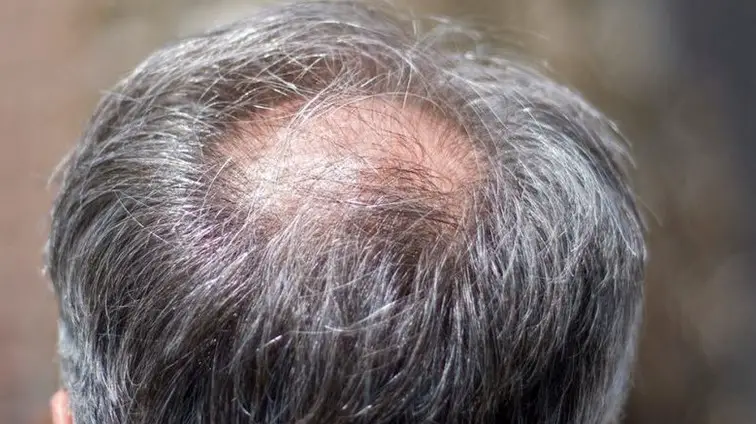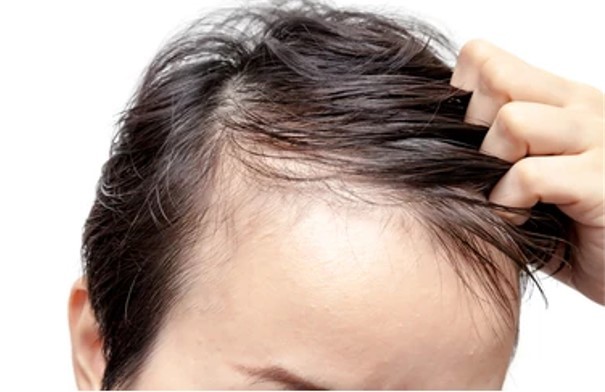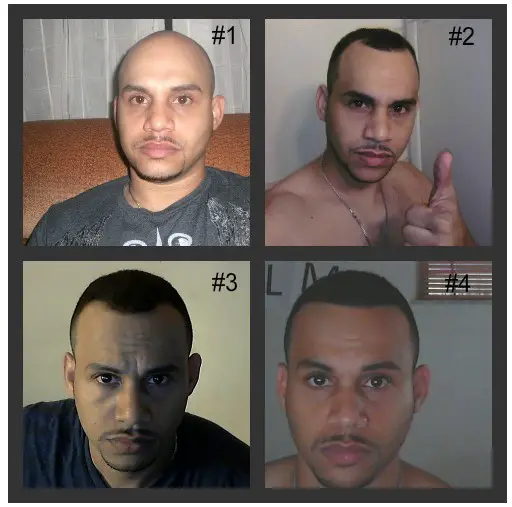Struggling with stress? Tired of the hustle of life? Here’s a powerful tool to help you out! The ‘Thin Crown’ technique. Discover how this simple practice can help you find peace and balance. Unlock your mental well-being!
If you’re experiencing thinning of the hair crown, you’re certainly not alone. Hair loss is a common issue that affects both men and women, and can be caused by a variety of factors such as aging, stress, genetics, poor nutrition, and environmental damage. Thankfully, there are ways to combat hair loss and reduce the thinning of your hair crown. In this blog post, we’ll discuss what you can do to restore your thin crown and regain the confidence that comes with having healthy hair.
What is Crown Hair Thinning and Why Does it Happen?
Hair thinning is a common problem that many people struggle with. Crown hair thinning, also known as the receding crown, is when the hair around your crown begins to thin out, leaving the scalp exposed.
This condition is caused by a variety of factors, including genetics, hormonal changes, poor nutrition, and age-related hair loss. It can affect both men and women, though it is more common in men. Crown hair thinning can be a source of distress and insecurity, but there are some treatments available that can help restore your full head of hair.
Understanding Male Pattern Baldness and DHT
Do you have thinning or balding hair? Then it’s essential to understand male pattern baldness and DHT. It’s a common hair loss condition caused by genes and male hormones – dihydrotestosterone (DHT). This hormone causes hair follicles to shrink until they stop growing new hair, leading to a receding hairline or bald spot at the crown.
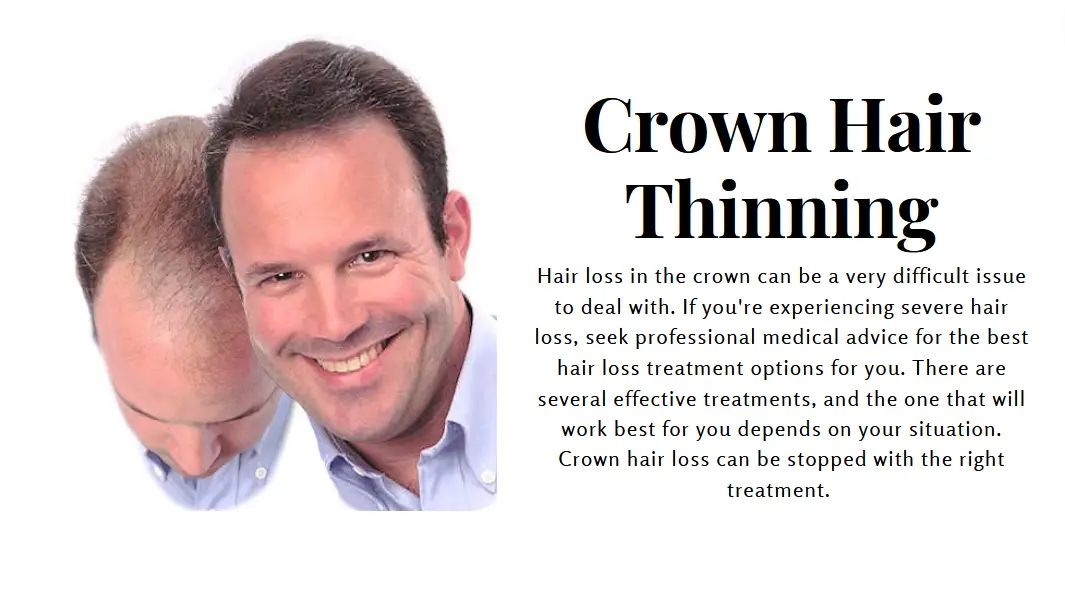
Treatment options include:
- Crown hair transplants
- Topical treatments (e.g. Minoxidil, Finasteride)
- Low Level Laser Therapy (LLLT)
- Platelet Rich Plasma (PRP)
- Hair supplements
- Lifestyle changes (healthy diet, exercise, stress management)
Speak to your doctor first to decide the best and safest option for you. Plus, look after your hair with caution – avoid hot tools, high ponytails and other hairdos that can harm your hair health.
Common Signs of a Balding Crown
Common Signs of a Balding Crown – a guide for those with hair loss in this area. Recognize these signs quickly – to prevent more hair loss and seek help.
This article has a list of common signs of a balding crown, so readers can spot the problem before it’s too late:
- Thinning hair at the crown.
- A receding hairline.
- A bald spot at the top of the head.
- An increase in the amount of hairs falling out.
- A decrease in the amount of new hairs growing.
Receding Hairline
Receding hairline is a sign of male pattern baldness. Hair thins or falls out on the crown area of the head. Knowing the signs and symptoms can help you seek treatment and make lifestyle changes. Hormonal imbalance, androgenetic alopecia, and PCOS can cause hair thinning at the crown.
There are treatments available:
- minoxidil
- hair transplant
- PRP Therapy
- Bio-Pixilin
and lifestyle changes like diet and exercise. Consult a doctor for professional advice. Taking action early can promote hair growth and prevent further hair loss. Don’t wait too long!
Hair Falls Out More Than Usual
Hair shedding is normal. If you’re losing hair at the crown of your head, it could be a sign of balding. This type of hair loss can be caused by androgenetic alopecia, testosterone, or the health of your hair. Get medical advice about treatments that can help.
One option is Platelet Rich Plasma (PRP) therapy. This uses growth factors from your own blood plasma to encourage hair growth. Minoxidil is another option. This is a topical treatment that helps with regrowth. In more severe cases, there is hair transplant surgery.
Understand the hair growth cycle. Blood flow to the scalp and hairstyles that don’t pull on your hair can help it stay healthy.
If you’re worried about hair loss or balding, talk to your doctor. Find a safe and effective way to address it, so it doesn’t impact your self-confidence.
Thinner Hair in General
Thin hair in the crown can be a sign of male pattern hair loss. Spotting it early helps take proactive steps to prevent more hair loss. To treat it, understand what causes it. Treatment options include hair loss therapies, platelet-rich plasma therapy, and hair transplants.
To battle hair thinning at crown, style it to promote growth, use thickening products, and maintain healthy hair cycles. If experiencing hair loss, consult a doctor for professional advice. Ignoring or leaving it untreated can lead to a changed appearance.
Photographic Evidence
Photographic evidence is key for spotting balding at the crown. Pictures let readers easily recognize if they have the same symptoms. Some signs to look out for: thinning crown, balding, and a bald spot on the crown.
Identifying the cause is important for choosing the right treatment, e.g. hair loss or PRP. If readers see early signs, they must talk to a doctor. Making changes to hairstyles and grooming can also affect growth.
Pro tip: Deal with the problem by finding the root and treating it safely.
Hair Grows Slower
Hair growth can be affected by many things. Thinning of the crown is a common sign of balding. Hair grows slowly, so it’s helpful to manage expectations. If you notice bald spots or thinning hair on your crown, it’s important to get professional medical advice.
Causes of hair loss can include medical conditions, genetics, and hormones. Treatments may be Platelet Rich Plasma therapy, minoxidil, or products to promote hair growth. To support the hair growth cycle, it’s essential to have a healthy lifestyle. This includes blood flow and natural hair changes. If you’re concerned about balding or thinning around your crown, speak with a pro.
Quick tip – Getting help early can help make hair loss treatments more effective and safe, making for a fuller new look.
Scalp Itches
Scalp itchiness may be a sign of thinning hair and balding crown. Observe your scalp and recognize the typical signs of hair loss at the crown. This is a typical form of hair loss in men, known as androgenetic alopecia.
Thinning crown can come from a hormone called dihydrotestosterone (DHT). This hormone impacts hair growth and can result in male pattern hair loss. If you are worried about hair loss, there are things you can do to help your hair grow:
- Taking medication like Rogaine.
- Checking out conditions like polycystic ovary syndrome.
Treating your hair loss may give you a new look with thicker, fuller hair. If left untreated, it is important to consult your doctor. There are products that can assist with the safety and effectiveness of your hair growth.
How to Stop Crown Hair Thinning?
Combat thinning hair? These tips for preventing and reversing this. Follow these steps to protect your hair and restore your crowning glory. Simple and easy!
- Step 1: Use a mild shampoo and conditioner to keep your hair clean and healthy. Shampooing too often or using harsh products can strip away natural oils, leaving your crown of hair dry and vulnerable to breakage.
- Step 2: Avoid using heat styling tools, such as blow dryers and curling irons, as they can damage your hair. If you must use them, use the lowest setting possible and make sure to apply a heat protectant product before styling.
- Step 3: Eat a balanced diet with plenty of protein, vitamins, and minerals to promote healthy hair growth. Make sure to get plenty of omega-3 fatty acids, biotin, iron, zinc, and vitamins A, B, C, and E for optimal results.
- Step 4: Massage the scalp regularly to stimulate blood flow and promote hair growth. This will help distribute natural oils throughout the scalp, nourish the hair follicles, and reduce stress hormones that can cause receding crowns.
- Step 5: Use natural oils, such as coconut oil, to nourish the scalp and hair follicles. Gently massage into the scalp and let sit for 15 minutes before rinsing off.
By following these steps you can help stop your crown hair loss and improve your overall hair health. With a little bit of effort and patience, you can restore your crown of hair back to its former glory.
Treatment for thin crown
Hair loss on the crown of your head can be a source of distress and anxiety. Fortunately, there are other recommendations you can take to prevent and reverse hair thinning on the crown. Use any of the following treatments to help stop your crown hair loss.
Bio-Pixilin
Bio-Pixilin is an excellent choice for those struggling with hair thinning or bald spots on their crown. Androgenetic alopecia is a common cause of crown hair thinning in men. Hair falls out and does not grow back in the anagen phase, this is where Bio-Pixilin comes in. It helps promote hair growth by blocking DHT (dihydrotestosterone) from impacting the thickness of the hair.
Combat hair loss with Bio-Pixilin. It’s been proven safe and effective in creating a fuller and thicker hair appearance. However, if you have PCOS (polycystic ovary syndrome) or alopecia areata, it’s important to see your doctor before trying any new treatment. Rogaine and other similar products can also be helpful.
Finasteride
Finasteride is a medication to treat hair loss, especially male pattern baldness. It stops the production of DHT. If you are concerned about thinning hair or baldness, finasteride may be an option. Talk to your doctor first, as there could be other causes of hair loss. Plus, there are other products and lifestyle changes to promote hair growth. To stop or reverse thinning hair, you have to identify the root cause and address it.
Pro tip: Talk to your doctor to see if finasteride is the right treatment for you.
Minoxidil
Minoxidil is a top-notch hair loss treatment. It helps stop thinning hair on the crown. When you see thinning hair, it can be upsetting. But, minoxidil may be the solution. It works by widening the blood vessels in your scalp. This brings more oxygen, blood and nutrients to your hair follicles.
Before you start any new hair loss treatment, you should understand the cause. Male pattern hair loss, or androgenetic alopecia, is a common cause for thinning hair or bald spots on the crown. Other factors include genetics, hormones, and medical conditions like polycystic ovary syndrome. Talk to your healthcare provider about minoxidil or other treatments that might help.
Apply minoxidil daily, and have patience – it could take several months to see results.
Low-Level Laser Therapy (LLLT)
Low-Level Laser Therapy (LLLT) can stop crown hair thinning, a common issue for many people. LLLT uses light energy to stimulate hair follicles and promote growth, increasing blood flow to the scalp also helps in growing hair.
Genetics, hormone imbalances and age can all be factors in crown hair thinning. LLLT can address these issues and help hair regrow around the crown area.
Are you worried about losing your hair now or in the future? LLLT can help with androgenetic alopecia and other causes of hair loss. Rogaine is a product that can make the treatment more effective and safer.
Pro Tip: Talk to your healthcare professional to see how LLLT can fit into your hair care routine for a new and fuller look.
PRP (Platelet Rich Plasma) Therapy
PRP (Platelet Rich Plasma) Therapy is a revolutionary treatment for hair loss and thinning crowns. This therapy involves injecting your own platelets into the scalp. It helps promote hair growth and increase hair thickness.
Are you worried about thinning hair? PRP therapy can help you get to the root of the problem. DHT shortens the anagen phase and lengthens the catagen and telogen resting phases. This leads to thinner and weaker hair. PRP activates platelets, releasing growth factors that stimulate hair follicle stem cells. This promotes new hair growth and a thicker, fuller appearance. Research has proven PRP therapy to be effective and safe.
Other treatments such as Rogaine and treatments for conditions like polycystic ovary syndrome can also improve hair growth. Pro tip: Managing the cause of hair loss is key to having a healthy head of hair.
Hair Transplant Surgery
Combat crown hair thinning? Hair transplant surgery is a great option. Thinning hair, especially at the crown, can be a confidence-buster. Male pattern hair loss and polycystic ovary syndrome are two common causes. Hair loss can start with a bald spot on the crown and go elsewhere on the scalp or body. Hair transplant surgery can help promote growth and give you a new ‘do.
DHT (dihydrotestosterone) is the hormone causing male pattern baldness. Rogaine is one product that can help stop thinning hair. Let’s talk about efficacy and safety of these products to get you thicker, fuller hair and restore your self-esteem.
How to Prevent Hair Thinning at the Crown
Are you searching for methods to stop your hair from thinning at the crown? This article offers useful suggestions on how to get thicker hair by avoiding crown thinning. Find out about the reasons of crown thinning, how to recognize it, and the best practices for keeping hair loss away from this region.
Take Care of Your Hygiene
Personal hygiene is important for preventing thinning hair at the crown. Male pattern hair loss, caused by high levels of DHT, is often to blame. But, other things can affect hair quality too.
- Wash your hair regularly and keep your scalp clean.
- Choose hair products that are gentle and suitable for your type.
- Also, style your hair so it doesn’t put pressure on the crown.
- Eating the right foods and getting enough vitamins and minerals is key for healthy hair.
If the crown is thinning or balding, address the issue ASAP. Speak to a medical professional for advice. Look for products like Rogaine and minoxidil. PCOS and stress can also cause thinning, so take good care of your scalp and body.
Remember: a hair care routine tailored to you can make a huge difference in keeping a full crown.
Avoid Hot Tools
Stay away from hot tools! This is so important to stop thinning hair at the crown. Straighteners and curling irons can cause breakage and lead to hair loss, particularly in thinning areas. Male pattern baldness often starts at the crown. Thinning can be caused by genetics, hormone imbalances, aging, etc.
To encourage hair growth, avoid hot tools and use products that can help. DHT levels, PCOS, and stress can also affect hair growth. Rogaine and essential oils can give you thicker, fuller hair. If you notice thinning, find ways to prevent further damage and promote growth.
Pro tip: Use a heat protector with hot tools and try to limit their use.
Dont Scratch Your Scalp
Worried about thinning hair at the crown? Scratching your scalp can make it worse, so it’s important to resist! Male pattern hair loss can be caused by an increase in DHT levels. PCOS sufferers may also experience thinning hair. To help with new growth, try applying rogaine.
Looking after your scalp, reducing stress, and living a healthy lifestyle can all help to prevent thinning and encourage thicker, fuller hair. So, don’t scratch, keep active, and speak to a doctor if you need to.
Follow Healthy Diets
A healthy diet can be very important in preventing hair thinning at the crown. This type of hair loss makes the hair look dull and lifeless. Male pattern baldness, which often starts with a bald spot on the crown, is caused by genetics and dihydrotestosterone. Women may also experience thinning due to conditions like polycystic ovary syndrome.
Eating hair-healthy foods, like eggs, spinach, nuts, and seeds, can help promote growth and make hair thicker. Applying products like Rogaine to your scalp can help prevent further loss. It’s essential to learn how hair loss starts and how it affects different parts of your body.
Pro tip: Taking good care of your diet and living a healthy lifestyle can help reduce thinning.
Reduce Stress
Male pattern baldness can lead to hair thinning and a bald spot on your crown. But, there are ways to stop this! Lowering stress levels is a great way to prevent hair thinning. Relaxing and reducing stress can lead to thicker and fuller hair growth.
If you’re worried about thinning on your scalp, including the crown, use Rogaine. This can help your hair grow thicker and fuller. Additionally, medical conditions, such as polycystic ovary syndrome, could be causing hair thinning. To prevent this, take care of your scalp and reduce stress. Now, you can keep a healthy and full head of hair!
Is it Normal for Hair at the Crown to be Thinner?
‘Is it Normal for Hair at the Crown to be Thinner?’ This question is asked by many men and women. We will explore why the crown area thins. Also, check out some potential solutions! Let’s dive in and find out the causes of thinning hair at the crown.
FAQs about Thin Crown
What is thin crown and why does it happen?
Thin crown refers to thinning of hair at the crown of the head. This can happen due to various factors such as male pattern hair loss, polycystic ovary syndrome, or simply genetics. When the hair around the crown is thin, it can impact your hair’s overall appearance.
How can I help promote hair growth at my thin crown?
If you’re worried about thinning hair at your crown, there are several measures you can take to help promote hair growth. Rogaine is a popular over-the-counter option, as it has been clinically proven to regrow hair. Additionally, certain vitamins and supplements, such as biotin and iron, may aid in hair growth. It’s best to consult with a healthcare provider to determine the best course of action for your individual needs.
Can thin crown happen in women?
Yes, thinning hair around the crown can happen in both men and women. In women, it may be more likely to occur due to hormonal changes, such as polycystic ovary syndrome. If you’re experiencing thinning hair in areas of your scalp, it’s important to speak with a healthcare provider to determine the underlying cause and potential treatment options.
How does androgenic hair loss impact thin crown?
Androgenic hair loss, also known as male or female pattern hair loss, is a common cause of thinning hair at the crown. This occurs when hair follicles become sensitive to androgens, which are hormones that regulate hair growth. Over time, the hair at the crown may become thinner and ultimately stop growing altogether.
What can I do to prevent further thinning at the crown?
If you’re noticing that your hair is starting to thin at the crown, there are several things you can do to potentially prevent further thinning. First, try to avoid hairstyles that pull on the hair, as this can cause damage and breakage. Additionally, eating a balanced diet rich in vitamins and minerals that support hair growth, including hair at the crown, may help. Finally, there are topical treatments, such as minoxidil, you can apply to your scalp to help promote hair growth.
Is there a way to improve the appearance of my thin crown?
If you’re unhappy with the appearance of your thin crown, there are several things you can do to improve it. First, try styling your hair in a way that adds volume and covers the areas of thinning. Additionally, using hair fibers, which are temporary products that attach to the hair to give the appearance of more volume, may help. Finally, there are surgical options, such as hair transplants, that can provide a more permanent new appearance. It’s best to consult with a healthcare provider or hair specialist to determine the best course of action for your individual needs.
Soruce:
- AI Powered Bald Filter Online 2024: See Yourself with No Hair! - January 19, 2024
- Harklinikken Bad Reviews 2024: Analyzing Negative Feedbacks - January 18, 2024
- How to Get the Alex Eubank Hair | Step-By-Step Tutorial 2024 - January 18, 2024

